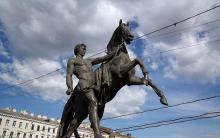In the article we will consider such an economic indicator as capital-labor ratio, which is used to evaluate companies and business plans.
Capital-labor ratio
Capital-labor ratiolabor (analogue:Fixed capital per worker, capital-to-labor ratio) is an indicator that shows the efficiency of using the production assets of an enterprise. In other words, the coefficient reflects the degree to which personnel are provided with basic means of production. The main means of production include: machines, tools, equipment, machinery, transport, buildings, structures, production infrastructure, etc.
Formula for calculating capital-labor ratio
Capital-labor ratio (K capital.v) is calculated from the balance sheet and represents the ratio of the average annual cost of fixed assets to the average number of personnel. The coefficient shows the cost in rubles of fixed production assets per worker and is calculated using the formula:
In the practice of economic accounting, during the period under review, the assessment of capital-labor ratio, the cost of fixed assets may change due to disposal or commissioning. Therefore, it is necessary to calculate the residual value of fixed assets; as a result, the formula for calculating the capital-labor ratio will have the following form (during the year):
fixed assets introduced during the year;
OS disposed – fixed assets of production disposed of during the year;
N 1 – number of months of use of introduced fixed assets;
N 2 – number of months of use of retired fixed assets.
Analysis of capital-labor ratio
Increasing the capital-labor ratio of fixed assets increases the labor productivity of working personnel. All fixed assets are divided into two classes: active and passive. The first group includes machines, equipment, machines, etc. The second group consists of buildings, structures, etc. Analysis of the dynamics of changes in active fixed assets allows us to determine the nature of automation of the production process. Increasing production automation has a positive effect on the competitiveness and investment attractiveness of the enterprise.
In the process of analyzing the efficiency of using fixed production assets, in addition to the capital-labor ratio, they use: capital productivity,
FV = Average annual cost of OPF / Average annual number of employees.
By comparing the level of this indicator with the plan and level of previous years, one can trace the trend of its development. The level of capital-labor ratio increases mainly due to the commissioning of new production facilities, i.e. increase in the average annual cost of open pension funds. At the same time, an important factor in its growth may be a reduction in the number of workers in the busiest shift due to the introduction of multi-machine maintenance, the development of related professions, extensive mechanization and automation of production.
The level of capital-labor ratio influences the level of labor productivity. The analysis determines the ratio of growth rates of capital-labor ratio and labor productivity:
- planned growth rates of capital-labor ratio and labor productivity compared to the previous year;
- actual growth rates of capital-labor ratio and labor productivity in relation to the previous year;
- actual growth rates compared to the plan.
The obtained results (deviations) characterize the amount of advance or lag. It is desirable that the growth rate of labor productivity outpace the growth rate of the capital-labor ratio.
Technical equipment of labor is determined by the ratio of the cost of production equipment to the average number of workers in the largest shift. Its growth rate is compared with the growth rate of labor productivity. It is desirable that the growth rate of labor productivity outpace the growth rate of technical equipment of labor.
Analysis of the use of fixed assets
The efficiency of using fixed production assets is characterized by a system of general and specific indicators.
Summary indicators reflect the level of use of the entire set of fixed production assets of the organization and its production divisions.
Private indicators are used to characterize the use of certain types of machines, equipment, production area, for example, average production in physical terms per unit of equipment per shift, production per 1 m 2 of production area, etc.
General indicators include:
capital productivity of fixed production assets;
capital intensity of fixed production assets;
capital profitability of fixed production assets;
relative savings of fixed production assets.
The capital productivity indicator is calculated using the formula
FO = Production volume / Average annual cost of general production.
Capital productivity shows how much production the organization receives from each tenge invested in fixed production assets. The indicator can also be calculated in natural units in the production of homogeneous products. It more accurately characterizes the effectiveness of OPF.
The capital productivity indicator is analyzed over a number of years, so the volume of production is adjusted for changes in prices and structural changes, and the cost of fixed production assets is adjusted for the revaluation factor. An increase in capital productivity leads to a decrease in the amount of depreciation charges per tenge of finished products.
The growth of capital productivity is one of the factors of intensive growth in the volume of production in value terms (VP). This dependence is described by the factor model
VP = OPF · FO.
Based on the factor model, the increase in production volume is calculated due to an increase in the general operating fund and an increase in capital productivity
ΔVP = ΔVP OPF + ΔVP FO.
The increase in production due to capital productivity can be calculated using the absolute difference method:
ΔVP OPF = ΔOPF · FO 1;
ΔVP FO = ΔFO OPF 1
or integral method:
ΔVP OPF = ΔOPF · FO 0 + (ΔOPF · ΔFO) / 2;
ΔVP FO = ΔFO OPF 0 + (ΔOPF ΔFO) / 2,
where: OPF 0, OPF 1 – respectively, the cost of fixed production assets in the base and reporting periods; FO 0, FO 1 – capital productivity of the base and reporting periods, respectively.
Another important indicator characterizing the effectiveness of using the OS is capital intensity:
FE = Average annual cost of OPF/Production volume.
Financial analysts of any enterprise conduct research in the organization of its work and optimize business activity indicators. Fixed assets are examined in some detail. Product quality and future profits depend on this. Therefore, the capital-labor ratio, the formula of which allows one to assess the condition of equipment and other production assets, is necessarily used by analysts.
General concept
The capital-labor ratio is an indicator that allows us to assess the efficiency of using the organization's production assets. It makes it clear how the staff is provided with basic labor tools. The quality of work depends on this.
Excess of the number of production assets over the real need for them leads to downtime and inappropriate use of equipment. The deficiency also reduces labor productivity and requires immediate optimization. This will make it possible to receive the greatest amount of profit.
The capital-labor ratio is a relative indicator. It provides information about the cost of equipment per employee involved in the main activity or for all employees of the company.
The coefficient can be calculated both for one site and for the entire enterprise in total. This makes it possible to track the distribution structure of production funds.
Data collection
The capital-labor ratio, the formula of which will be discussed further, requires the correct collection of information. To do this, you need to refer to the financial statements of the enterprise. The accounting documents indicate the number of employees. Here it is important to consider personnel by category. Engineering and technical personnel, workers, employees and service personnel are formed into separate groups. It is also advisable to have information on the classification and number of workers for each production site. 
You will then need to collect information about the book value of fixed assets. Here it is also necessary to study their size by site and production workshop. To find the cost of fixed assets on the date of calculation, you need to subtract those that were retired from their quantity at the beginning of the period and add equipment, buildings, vehicles, etc. acquired during this time.
Carrying out the analysis implies the need to make calculations for all structural divisions of the enterprise to study the structure of the indicator. This will make it possible to eliminate negative trends for each workshop separately.
Calculation formula
To calculate the capital-labor ratio, you need to use balance sheet data. It is also necessary to study the financial statements of the enterprise. 
Capital intensity and capital-labor ratio are inverse indicators. Therefore, they are usually calculated together. But the second coefficient is capable of providing information about the cost in monetary units of fixed assets of production per employee. The formula looks like this:
Kfv = Average value of fixed assets/Average number of employees on the list.
To make the calculation, you must use the data from the financial statements of the enterprise and present the formula in the following form:
Kfv = (OS+OSp*M1/12+OSv*M2/12)/T, where OS are fixed assets at the beginning of the period under study, OSp are introduced production assets, OSv are eliminated production assets, M1 is the number of months of use of new means of production , M2 – the number of months of operation of the old equipment that was removed from the enterprise, T – the number of employees.
Calculation example
The capital-labor ratio, the formula for the balance of which was presented above, requires consideration with an example. Its calculation is quite simple. After collecting the necessary information, it must be inserted into the equation. 
For example, an enterprise has established the average number of workshop workers at 240 people. The cost of equipment for this section amounted to 2,896 thousand rubles. During the period under review, there were no changes in the number of personnel and fixed assets. The capital-labor ratio will be as follows:
Kfv = 2896/240 = 12.07 thousand rubles. per person.
In order not to make cumbersome calculations associated with the introduction (disposal) of equipment into production, for the study it is necessary to use information obtained from the accounting department on the date of its conduct. Here the amount of existing fixed assets will already be determined.
Analysis of fixed assets
The capital-labor ratio reflects changes in the productivity of company employees. Its increase indicates positive dynamics. To correctly analyze the coefficient, it is necessary to delve deeper into the structure of fixed assets of production. 
They are conventionally divided into two categories. The first group includes the active group of property of the enterprise. These are equipment, machines, machines, vehicles, etc. The second group is passive means. These include structures, production facilities, and buildings for various purposes.
Studying the dynamics of the first group of fixed assets makes it possible to assess the automation of a site or an entire enterprise. Its increase indicates a positive trend. Automation helps to increase competitiveness and attractiveness for investment.
Interpretation of the result
The capital-labor ratio, the formula of which was presented above, allows us to draw certain conclusions about the organization of work of the company’s means of production. If the coefficient tracked over time increases, this indicates an increase in the efficiency of using production tools.
When the indicator decreases, the conclusion is also negative. The dynamics of the indicator, which tends to decrease, indicates ineffective use of fixed technology assets. In this case, all indicators of the organization of work of fixed assets are assessed, and measures are developed to improve them.
Having studied such an indicator as capital-labor ratio, the formula of which allows you to determine its value on the balance sheet, you can analyze the organization of work of the company’s main production assets. This will identify ways to improve and improve future performance.
The use of fixed assets is represented by indicators of capital productivity, capital intensity and capital-labor ratio.
Capital productivity
The efficiency of using fixed assets is characterized by the capital productivity indicator, calculated as the ratio of the volume of production for the year (at the enterprise level) to the average annual total cost. At the industry level, output or gross value added is used as an indicator of production, and at the level of the economy as a whole, value is used.
Capital productivity This is the volume of output divided by the average amount of industrial production fixed assets at original cost.
Rational use of fixed production assets is necessary to increase the production of social product and.
Increasing the level of use of fixed assets allows you to increase the size of production output without additional capital investments and in a shorter time. Accelerates, reduces the cost of reproduction of new funds and reduces.
The economic effect of increasing the level of use of fixed assets is an increase in social labor productivity.
Capital productivity shows how much output (or profit) an organization receives from each ruble of its fixed assets.
Let us determine by the method of absolute differences the influence on the volume of production of two factors associated with fixed assets:
- quantitative (extensive) factor - the amount of fixed assets;
- qualitative (intensive) factor - capital productivity.
The increase in production output compared to the previous year was influenced by the following factors:
- an increase in the amount of fixed assets could increase production output by +6174 x 1.01 = +6235.7 thousand rubles.
- a decrease in capital productivity reduced output by the amount of (-0.18) x 27985 = - 5037.3 thousand rubles. The total influence of two factors (balance of factors) is: +6235.7 - 5037.3 = +1198 thousand rubles.
Capital intensity
Capital intensity is the reciprocal of capital productivity. It characterizes how many fixed production assets account for 1 ruble of manufactured products.
Capital intensity is the average amount of industrial production fixed assets at original cost divided by the volume of output.
Reducing capital intensity means saving labor.
The value of capital productivity shows how much production is received from each ruble invested in fixed assets, and serves to determine the economic efficiency of using existing fixed assets.
Capital intensity value shows how much money needs to be spent on fixed assets to obtain the required volume of output.
Thus - capital intensity shows, how many fixed assets account for each ruble of output. If the use of fixed assets improves, then capital productivity should increase and capital intensity should decrease.
When calculating capital productivity, working machines and equipment (the active part of fixed assets) are separated from fixed assets. A comparison of growth rates and percentages of fulfillment of the capital productivity plan per 1 ruble of the cost of fixed industrial production assets and per 1 ruble of the cost of working machinery and equipment shows the impact of changes in the structure of fixed assets on the efficiency of their use. The second indicator in these conditions should be ahead of the first (if the share of the active part of fixed assets increases).
Capital-labor ratio
The capital-labor ratio has a huge impact on the values of capital productivity and capital intensity.
The capital-labor ratio is used to characterize the degree to which workers are equipped with labor.
Capital-to-capital ratio and capital productivity are interconnected through the indicator labor productivity(Labor productivity = Product output / ).
Thus, capital productivity = labor productivity / capital-labor ratio.
To improve production efficiency, it is important to ensure faster growth in production compared to the growth of fixed production assets.
Using the problem, we will consider the method of calculating capital intensity, capital-labor ratio and capital productivity.
Task| Base period | Reporting period | |||
| Company | Production volume | Average cost of PF | Production volume | Average cost of PF |
| 1 | 18 | 15 | 36 | 24 |
| 2 | 140 | 35 | 158,4 | 36 |
- Dynamic coefficient of the concern's average capital productivity;
- The absolute impact on the change in average capital productivity of changes in capital productivity at each enterprise and changes in the capital structure.
Impact of changes in capital productivity of changes in fixed assets
Analysis of the condition and use of fixed assets
The volume of production depends on many factors, which can be grouped into three main groups:
- factors related to the availability, use, i.e. main industrial and production funds (funds);
- factors related to security () and their use;
- factors related to availability, movement and use.
The analysis should examine and measure the influence of these factors on . At the same time, the influence of each group of factors (resources) is determined ceteris paribus, i.e., it is assumed that factors belonging to other groups acted as intended.
Let's consider the first group of factors (resources) influencing the volume of output. All other things being equal, the greater the amount of fixed assets and the better their use, the greater the volume of production.
Main sources of information for analysis of fixed assets are: f. No. 5 of the annual report “Appendix to the Balance Sheet”, inventory cards for accounting of fixed assets, acts of acceptance and transfer of fixed assets, invoices for the internal movement of fixed assets, acts of acceptance and transfer of repaired, reconstructed, modernized fixed assets,
Fixed assets (assets) are means of labor used to manufacture products or to service the production process.
The analysis should begin by studying structure of fixed assets, i.e. the ratio of various groups of fixed assets in the total amount of their value.
Necessary so that in the structure of fixed assets the specific gravity of their active part increased, i.e. working machines and equipment that directly affect objects of labor, i.e. for materials. At the same time, the return on the use of fixed assets increases.
Then you should check how fixed assets are updated and calculate the following indicators:- fixed assets
- fixed assets
These coefficients should be calculated over several periods and the dynamics of renewal, disposal and growth of fixed assets should be monitored.
Then you need to study age composition of equipment, which is very important for characterizing the technical condition of fixed assets. For this purpose, equipment is grouped by service life.
This grouping shows the share of new equipment, the return on use of which is the highest, the share of equipment with average service life, as well as the percentage of obsolete labor tools.
Comparison of these indicators over several years shows trends in their changes (it should be borne in mind that renewal and disposal rates are calculated for a given period, and wear and tear rates are calculated at the beginning and end of the period).
Technological level of equipment
It is necessary to study the technological level of the equipment.
For this purpose, equipment is divided into the following groups:- manually operated equipment;
- partially mechanized simple equipment;
- fully mechanized simple equipment;
- partially automated equipment;
- fully automated equipment;
- automated and programmable equipment;
- flexible, automated and programmable equipment.
In the process of analysis, the technological level of equipment is expressed by the following indicators:
Level of mechanization machinery and equipment is the total cost of equipment of types 2 - 7 divided by the total cost of equipment of types 1 - 7.
Automation level machinery and equipment is the total cost of equipment of types 4 - 7 divided by the total cost of equipment of types 1 - 7.
Level of complex automation machinery and equipment is the total cost of equipment of types 5 - 7 divided by the total cost of equipment of types 1 - 7.
Indicators of maintenance of machines and equipment
Level of labor mechanization is the number of workers servicing mechanized equipment divided by the total number of production workers.
Labor automation level This is the number of workers servicing automated equipment divided by the total number of production workers.
Analysis of the use of fixed assets
Having analyzed the state of fixed assets, we move on to analyzing their use. The most common indicators of the use of fixed assets are: capital productivity, capital intensity and capital-labor ratio (see the beginning of the article).
Equipment usage indicators
After studying the general indicators of the use of fixed assets, it is necessary to consider the use of equipment as the most active part of fixed assets, on which production output mainly depends.
Extensive use equipment can also be characterized by the coefficient of extensive equipment use.
Extensive equipment utilization rate— this is the actual number of machine-hours worked by the equipment divided by the basic (planned) number of machine-hours worked by the equipment.
K ex= Actual operating time of the equipment, hour / Standard operating time of the equipment, hour
Having considered the extensive use of equipment, let’s move on to studying its intensive use, i.e. usage but performance. It is analyzed by comparing actual indicators of product removal per machine-hour (machine-hour) with planned indicators, with indicators of previous periods, as well as with indicators of other related enterprises for groups of similar equipment
Equipment use performance can be characterized by the coefficient of intensive use of equipment.
Equipment intensive utilization rate- this is the actual average output per one worked machine-hour divided by the basic (planned) average output per one worked machine-hour.
Integral use of equipment, i.e. simultaneously in time and productivity, expressed coefficient of integral equipment utilization, which is defined as the product of the coefficients of extensive and intensive use of equipment.
At the conclusion of the analysis, it is necessary to summarize the reserves for increasing production output associated with fixed assets.
Such reserves can be:- commissioning of uninstalled equipment;
- increasing equipment shifts;
- eliminating the causes of above-planned whole-shift and intra-shift equipment downtime;
- reduction of planned losses of equipment operating time;
- implementation of organizational and technical measures aimed at reducing the operating time of equipment to produce a unit of product.
A financial assessment of an enterprise’s activities, its condition and the efficiency of resource management is carried out using many coefficients. Important are the indicators that determine the level of efficiency of use and involvement of fixed assets in the production process.
To characterize the production process, three main indicators are most often used:
- capital intensity,
- capital productivity,
- capital-labor ratio.
Capital-to-balance ratio formula allows you to assess the degree of provision of all employees with fixed assets. The company's fixed assets (funds) include:
- buildings, structures,
- machines, equipment, tools,
- transport,
- production infrastructure, etc.
The capital-labor ratio affects the values of capital productivity and capital intensity, so they should not be confused.
Capital-to-balance formula
The formula for the capital-labor ratio of fixed assets on the balance sheet requires data on the number of employees and fixed assets of the enterprise.
The capital-labor ratio formula on the balance sheet is as follows:
FV = SOS / MF
Here FV is the capital-labor ratio indicator,
COS – cost of fixed assets (per year),
SN – average number of employees.
The capital-labor ratio formula is calculated from the balance sheet by the ratio of the average annual cost of fixed assets to the average number of employees.
This indicator reflects the ruble value of fixed assets of production, which falls on one worker.
Average annual cost of fixed assets
When assessing the capital-labor ratio in practice during the period of time under study, the cost of fixed assets changes in accordance with disposal or input. For this reason, calculating the residual value of fixed assets is important.
The formula for calculating the average annual cost of fixed assets is as follows:
SOS = OCint + (OSvv*n1/12) + (OCsel * n2/12)
Here SOS is the average annual cost of fixed assets,
OSnach – fixed assets at the beginning of the year,
OS vv – fixed assets introduced during the year,
n1 – number of months of use of the entered funds,
OS vyb – retired fixed assets,
n 2 – the number of months during which the disposed funds were used.
The value of the capital-labor ratio
With an increase in the capital-labor ratio of fixed assets, labor productivity increases. All fixed assets are classified into active and passive funds. Active funds include:
- machines and equipment,
- vehicles, etc.
Passive funds can be:
- office building,
- finished goods warehouse,
- various buildings, etc.
By analyzing the dynamics of changes in active production assets, one can trace the nature of automation of the production process, the growth of which has a beneficial effect on the investment attractiveness and competitiveness of the enterprise. If there is an increase in the capital-labor ratio, then we can talk about an increase in the effective use of fixed assets, and vice versa.
When there is a tendency towards a decrease in the capital-labor ratio, one can note the ineffective use of enterprise funds. In this case, it is necessary to evaluate all the indicators in accordance with which fixed assets operate and develop certain measures.
Examples of problem solving
EXAMPLE 1
| Exercise | Calculate the capital-labor ratio of the enterprise using the following indicators. Cost of fixed assets: Beginning of the year - 279,000 rubles, End of the year - 277,000 rubles. Average annual number of employees – 15 people |
| Solution | Formula for capital-to-balance sheet ratio to solve this problem: FV = SOS / MF SOS = (279000 + 277000)/2 = 278000 rub. |











How not to teach children to read English
Temporal forms of Future in the Past Future in the past in indirect speech
Cheating on a loved one, interpretation of the dream book
October horoscope for Pisces woman
Why do you dream about your ex-boyfriend coming back?